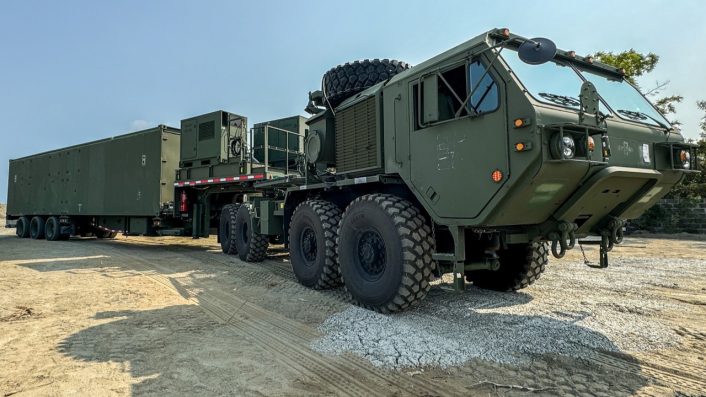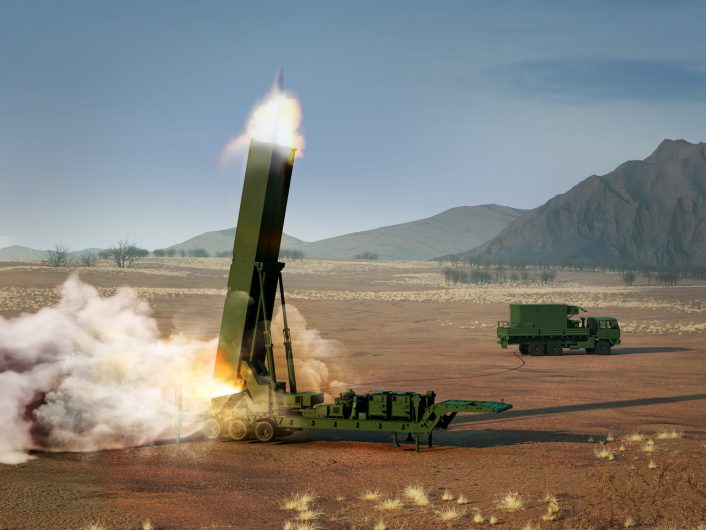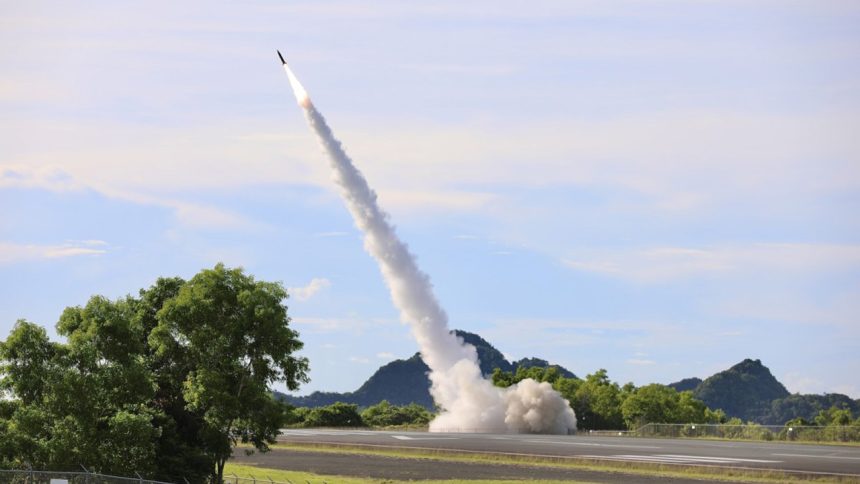In two years, the U.S. will begin episodic deployments of the long-range fires capabilities of its MDTF in Germany.
By 2026, the U.S. Army will deploy its new, long-range surface-to-surface missiles to Germany as per a new agreement the two countries inked ahead of the NATO summit. These missiles include the SM-6 (Standard Missile-6) and the Tomahawk, part of the MRC (Mid-Range Capabilities) Typhon system, and unspecified “developmental hypersonic weapons,” which would include the LRHW (Long-Range Hypersonic Weapon) and the PrSM (Precision Strike Missile).
The statement from the White House however did not explicitly name the MRC or the LRHW. “The United States will begin episodic deployments of the long-range fires capabilities of its MDTF (Multi-Domain Task Force) in Germany in 2026, as part of planning for enduring stationing of these capabilities in the future,” said the statement.

“When fully developed, these conventional long-range fires units will include SM-6, Tomahawk, and developmental hypersonic weapons, which have significantly longer range than current land-based fires in Europe,” it added.
By “episodic,” the statement means the deployment would not be permanent, but for brief periods whose duration is currently not known.
The INF and the Typhon
The Aviationist had reported in May about the USN (U.S. Navy) deploying the MRC Typhon to the Danish island of Bornholm in the Baltic for an exercise. The US began introducing the system around the time of the collapse of the INF (Intermediate-Range Nuclear Forces) Treaty in February 2019. The missiles used by the Typhon system – the SM-6 and the Tomahawk – can reach ranges of over 1,500 km.
This bridges the range gap between the 482 km range PrSM and the 2776 km LRHW. The INF, signed between the US and the then Soviet Union, had prohibited the development and fielding of ground-launched ballistic and cruise missiles with ranges between 500 and 5,500 km.
Earlier in April 2024, the US Army Pacific chief, General Charles Flynn, announced the deployment of a “long-range precision fire capability (coming) to the region,” without identifying the system. Later that month the US deployed the MRC/Typhon to the Philippines for exercises. The US had previously deployed the SM-6 variant of the Typhon MRC in Sep. 2023 on Bornholm.
美陆军提丰移动中程导弹系统Typhon MRC,近日成功测试发射了战斧巡航导弹。今年年初提丰系统成功发射了一枚SM-6导弹。测试证实了该系统的全面作战能力
一套完整的提丰系统,包括4辆发射车,每个发射器(车)4个单元,采用MK-41垂发系统。指控系统采用舰载“宙斯盾”系统发展来的版本。还有其他支援车辆 pic.twitter.com/yuT5KPqIuJ
— 极光 (@Aurora107E) July 4, 2023
Multi-Domain Task Force (MDTF)
Apart from the MRC, the other components being deployed include the Long-Range Hypersonic Batteries for the LRHW and the Long-Range Precision Fires Units for the PrSM and the ATACMS (Army Tactical Missile System). The last two can also be fired from a HIMARS (High-Mobility Artillery Rocket System). All of these form part of the US Army’s broader MDTF (Multi-Domain Task Force), which the service plans to establish worldwide.
The first reports of an LRFB (Long-Range Fire Battalion) slated to be set up in support of the European theater by 2026 amerged in Apr. 2024. According to Defense News, the Army established the 2nd MDTF in Europe in 2021. Two other MDTFs are based in the Indo-Pacific theater with plans to set up two more for a total of five MDTFs.
Three MDTFs will be focused on Pacific operations, one in Europe and one will be based at Fort Liberty, North Carolina, all capable of rapid deployment wherever needed. The 2st MDTF meanwhile, at the northern part of Philippines’s Luzon province, successfully deployed the MRC on Apr. 11, 2024.
PrSM and LRHW
The PrSM is a surface-to-surface, all-weather, guided missile, which can be fired from both the M270A1 MLRS (Multiple Launch Rocket System) and the M142 HIMARS. As the replacement for the MGM-140 ATACMS, PrSM doubles ATACMS’ current rate-of-fire with two missiles per launch pod. It can strike air defense systems, missile launchers, command and control (C2) nodes, troop assembly/staging areas at ranges of more than 500 kilometers.
On Jun. 16, 2024, the Army’s 3MDTF, the 1-181 Artillery Regiment, used two PrSMs against a moving sea target for the first time as a part of the Valiant Shield 24 SINKEX (Sinking Exercise) in Palau in the Indo-Pacific. The missile was fired from an AML (Autonomous Multi-Domain Launcher). This was “the first employment of both the AML and the PrSM outside of the U.S.,” an Army statement said.

Previously, on Mar. 6, the Army awarded Lockheed Martin a $219 million contract to produce more EOC (Early Operational Capability) PrSM weapons, the company announced. This was the fourth production contract until then for the missile. Lockheed Martin delivered the first missiles in December 2023 following a successful production qualification test in November.
The LRHW, according to latest information published by the U.S. Army, is a boost-glide weapon that uses a missile booster stack to carry a hypersonic glide body above the atmosphere. The glide body is then released to follow a ballistic trajectory until it enters the atmosphere, when it generates lift and levels out to glide at hypersonic speeds over a long distance to the target.
The Army planned for three flight tests of the LRHW before the first battery fielding in fiscal year 2023. Challenges were encountered in several joint flight test attempts in 2023. Currently, the LRHW is in the final stages of flight tests designed to collect required data, demonstrate capability and validate the system’s design, said the service.
Following a successful end-to-end flight test, the Army’s RCCTO (Rapid Capabilities and Critical Technologies Office) will deliver the first LRHW missile and transition the LRHW capability, “where the program will continue flight testing and further development.” Both the Army and the Navy are working together on the LRHW, since it “leverages a Navy-designed two-stage booster and the CHGB (Common Hypersonic Glide Body) packed in an Army canister.”
According to a January 2022 Arms Control Association article, the Cost Assessment and Program Evaluation Office estimated that the LRHW program will cost $4.4 billion for development and $2.5 billion for production. With a plan for 66 missiles, including 48 tactical missiles, the cost of each LRHW missile comes to $106 million.









